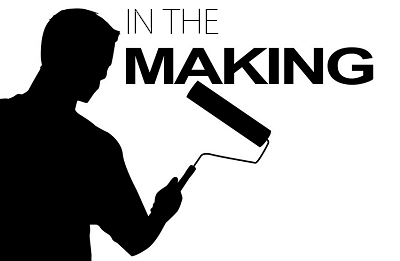
On April 30, 2014, Denise Chow, a staff writer for Live Science weighed the hopes and regulatory realties of drone technology, as she pondered the question "Could the skies one day be blackened by drones?" Advances in technology suggest so, though the U.S. may fall behind as the tech flounders in regulatory limbo.
Ms. Chow reported that when Raphael Pirker needed overhead shots for a commercial he was filming at the University of Virginia, instead of spending thousands of dollars to rent a helicopter, he attached a camera to a 5-lb. (2.3 kilograms) model airplane, creating a custom drone to capture high-flying aerial views of the campus. A year earlier, the 29-year-old photographer piloted a similar drone around the Statue of Liberty in New York, buzzing the monument's iconic crown and recording stunning close-up views of Liberty Island and downtown Manhattan.
Drones have been used by the military for decades, but Pirker's videos offer a glimpse of just one possible way these robotic fliers could be used in the future. As advances in technology have made drones smaller and more accessible, their potential applications are extending far beyond their use as warfighters for the military or toys for hobbyists.
And people are taking notice. In December 2013, Amazon founder Jeff Bezos created a buzz throughout the tech world when he introduced the idea of using drones to deliver goods to online shoppers. The proposal sparked people's imaginations for how drones could be used commercially — bringing to mind images of city skies full of delivery drones carrying parcels to people's doorsteps.
The technology for this same-day delivery service, dubbed Prime Air, is already being tested, according to Amazon, but the futuristic endeavor hinges on forthcoming guidelines from the Federal Aviation Administration (FAA), the regulatory agency charged with overseeing civil aviation.
A new industry
Still, Amazon is not the only company investigating future uses for drones. In late March, Facebook purchased Ascenta, a U.K.-based aerospace company that manufactures solar-powered drones, for $20 million. And earlier this month, Google acquired Titan Aerospace, a solar-powered drone company that Facebook had reportedly also been courting, for an undisclosed amount.
Timeline and facts about unmanned drones. Unmanned aerial vehicles have been increasingly popular in recent years.
The tech giants are thought to be using their fleets of high-altitude, solar-powered drones to extend the reach of Internet connectivity across the entire planet.
But tech entrepreneurs, artists and innovators are noticing the power of drone technology as well. Like Pirker, Hollywood filmmakers say drones offer an inexpensive way to capture aerial footage without the noise and unavoidable vibrations of helicopters; nonprofit organizations are experimenting with using drones to deliver provisions or medical supplies to desperate communities in remote locations; conservationists are already using drones to monitor animals in the wild without disturbing their natural habitats; and private companies are developing drones to assist with disaster-relief and search-and-rescue operations.
"Robotics — including drones — is going to be one of the most important and influential technologies of the 21st century," John Villasenor, a professor of electrical engineering at UCLA and a senior fellow at the Brookings Institution, a nonprofit think tank based in Washington, D.C., told Live Science. "So it's not surprising that they have led to so much interest and discussions, not only in the business community but also more broadly."
While still a burgeoning industry, worldwide spending on drones is expected to more than double over the next decade, totaling just more than $89 billion by the year 2023, according to a market study published last year by Teal Group Corp., an aerospace and defense research company based in Fairfax, Va. In fact, the FAA estimates that as many as 7,500 small commercial drones could be operational within five years in the United States.
"We are going to see an explosion of drone entrepreneurship in the coming years," said Timothy Reuter, president of the D.C. Area Drone User Group, a community organization dedicated to teaching people how to build and operate personal drones. "Aerial photography and videography will be the gateway drug, but it's going to extend so far beyond that, and we're going to see people do really exciting things with this technology."
What the future holds
But the road ahead could take more complicated efforts than merely tinkering with the technology and adjusting to the thought of seeing drones whiz by overhead, experts say. And it's Pirker who's been at the center of these discussions.
Pirker's aerial tours over lower Manhattan and the University of Virginia made him something of a pioneer, but the trailblazer is also at the heart of a decisive legal battle against the U.S. government.
In 2011, Pirker became the first and only drone operator fined by the FAA for flying a drone without a license. The agency fined Pirker $10,000 for his aerial stunt over the University of Virginia, claiming the photographer flew recklessly close to buildings and people. The first-of-its-kind penalty was appealed and brought before Patrick Geraghty, a federal judge with the National Transportation Safety Board. Last month, Geraghty ruled that despite the FAA's protestations, there are currently no laws in place banning commercial drones, and effectively dismissed the fine against Pirker.
The ruling was considered a victory for the burgeoning domestic drone industry, but it was just the beginning of a complex legal fight.
Pirker may have found himself at the vanguard of drone technology — what some predict could revolutionize the field of personal robotics — but he is hardly the only innovator who sees vast commercial potential for drones. Yet with the technology currently floundering in regulatory limbo, the United States may be in danger of falling behind in the industry, with innovation and the potential economic benefits from drones mired in bureaucracy, experts say.
"One of the things that's sad is the U.S. regulatory environment is really holding us back," Reuter told Live Science. "While the rest of the world is rapidly moving ahead, we are losing ground in international competitiveness."
Legal hurdles
The FAA, which did not respond by publish time to multiple requests for comment from Live Science, has barred the commercial use of drones until regulations are developed to ensure the unmanned aerial bots can be safely operated in cities, near buildings and people, and in the same airspace as manned aircraft. Late last year, the agency released a preliminary road map detailing its plan to adopt oversight of unmanned aircraft operations. Still, regulations for small drones that weigh less than 55 lbs. (25 kg) are expected no earlier than 2015, and it could be years later before rules are finalized for larger vehicles.
"In a way, drones have advanced so quickly that the law hasn't caught up with the technology," said Daniel Burrus, a technology futurist and the founder and CEO of Burrus Research, a Wisconsin-based research and consulting firm. "Until we get a ruling, it's a bit like the Wild West."
Meanwhile, other countries — including Australia, Canada and the United Kingdom — have already enacted more favorable policies toward the development of drones and commercial applications of the technology, said Brendan Schulman, Pirker's attorney and a special counsel at Kramer Levin Naftalis & Frankel in New York City.
In Japan, for instance, some farmers have been using a radio-controlled drone designed by the Yamaha Motor Co. to spray fertilizers and pesticides over crops for the past 20 years.
But there are regulatory bodies in other countries that are taking just as restrictive an approach to drones as the FAA, at least for the time being, Schulman said.
"Ours is not a unique position in the world, but it's certainly not progressive at all," he added. "There are countries that are far ahead of ours, in terms of supporting, promoting and authorizing the commercial use of drones." [Photos from Above: 8 Cool Camera-Carrying Drones]
This is precisely why industry stakeholders are closely following the Pirker case, said Ryan Calo, an assistant professor of law at the University of Washington in Seattle. Pirker's case represents the first time the legality of the FAA's commercial ban has been examined, and the outcome could have important implications for drone operators in the future.
Even though the judge ruled in Pirker's favor last month, the FAA has appealed the decision, and the ensuing legal process could alter the current regulatory environment and offer a glimpse into how the agency may handle the 2015 regulations.
"Pirker is a really good test case," Calo told Live Science. "Ultimately, I don't see a scenario where what the FAA does collapses the industry, but it could delay things and give other countries a competitive advantage. Arguably, it has already slowed the development of the industry."
Regulation vs. innovation
Still, regulations are a necessary part of integrating any type of emerging technology into societies, Burrus said. "Whenever you have a new technology that could create a hazard or could hurt people, you need rules and regulations," he explained. Amazon's "Prime Air" Delivery Drones Amazon's "Prime Air" drones are being designed as a same-day delivery system.
As part of the regulatory process, the FAA will also have to consider the limits of just how much commercial drone activity is safe. If Amazon's Prime Air is approved, Burrus said, what would stop other companies from following suit with similar delivery services? And if that's the case, would densely populated cities see swarms of drones constantly flying overhead?
"If this is happening over parts of the countryside, it might be fine, but if all these drones are flying over Manhattan, it could be crazy and, not to mention, dangerous," Burrus said.
The possible ubiquity of drones has also ignited debates about privacy rights. Advocacy groups worry that drones used in law enforcement, for example, could open the door to abuses of power.
"Our belief is that we need a system of rules to ensure that we can enjoy the benefits of drone technology — and that includes the benefits with private uses of drones — without bringing us closer to a surveillance society," said Allie Bohm, an advocacy and policy strategist with the nonprofit American Civil Liberties Union (ACLU), a nonpartisan organization dedicated to defending the rights and liberties of Americans, based on the country's laws and Constitution.
Even hobbyist drones could be used for nefarious purposes, such as snooping on people, spying through windows or gaining unauthorized access to people's backyards, Bohm said.
Yet many of these issues fall under the purview of existing "Peeping Tom" laws and privacy torts, Schulman said. Many of the privacy concerns raised so far, he claims, have been knee-jerk responses to a new technology, and have strayed from the root of the problem.
"The reaction thus far has been to try to restrict or target the technology for regulation, as opposed to targeting the offensive conduct," Schulman said. "I think that's the wrong approach to have. We should certainly have discussions about privacy, but we need to focus on what really matters."
Finding a balance
To help with the regulatory process, the FAA selected six test sites across the country to conduct research on the certification and operational requirements needed to integrate drones into the national airspace. On April 21, the agency announced its first test site — a location in North Dakota — is now operational.
As the FAA crafts the rules that will shape the drone industry, the tricky part will be to find the appropriate balance between regulating against reckless behavior and allowing enough freedom for innovation to occur naturally within the rapidly advancing field, experts say.
Schulman's concern is that the FAA's rules will be too restrictive, which could create an unreasonable burden on the emerging technology. He compares the process unfolding now between the FAA and the commercial drone industry to what happened in the mid-1990s during the commercialization of the Internet, which was initially created as a tool for the government and the military.
"If, at that time, a federal agency said to the American public that they cannot commercialize the Internet until all regulations are in place concerning its use, it would have prevented many of the most valuable companies from emerging — everything from eBay to Yahoo to Google," Schulman said. "If the government had stood in the way of the commercial use of the Internet, it would have been very damaging to the American economy."



According to an October 6, 2014 article recently written by Jonathan Trivers, columnist for Floor Covering Weekly, Amazon is the second largest “retailer” in the U.S and there is much that has been written about its suggestion that it will start delivering items to consumers in drones; or that it now sell its own phone; or it is producing six new original TV shows, and has or has tested same-day grocery delivery on the West Coast.

But very little has been spoken about (by Jeff Bezos, CEO) their new venture to become a distributor of anything and everything. AmazonSupply is an e-commerce site targeting the unsexy but hugely lucrative wholesale and distribution business in the U.S. In order to get a sense of what they presently offer, go to Amazonsupply.com. Amazon Supply started around two years ago with about 500,000 items; it now offers 2.25 million items. Free two day shipping on orders more than $50 and if needed, Amazon offers a corporate credit program for the retailers/buyers.
Why does Amazon want to become a distributor selling to retailers and contractors? Sales volume! Retailers rang up almost $4 trillion in sales last year. According to Census, distributors did $7 trillion in sales. And Dirk Van Dongen, president of the National Association of Wholesaler-Distributors, says what is even better for Amazon is that most distributors are regional not national distributors. (Think flooring as the perfect example.) Of America’s 35,000 distributors, almost all are regional, family-run companies pulling in annual revenues of $50 million or less, and only 160 have more than $1 billion in sales annually.
“The question is not whether AmazonSupply will be a threat,” says Richard Balaban, who has studied the site for management consulting firm Oliver Wyman. “Rather it is which categories will be attacked first.” Amazon is quite proud of its ability to sell fairly complex products without a sales person. Lots of videos and training guides; and they know that the story they tell about the product and the company is the same for every prospective customer. No salesman to make false claims or oversell the product. It’s sold with videos and words that remain the same. No distributor can make that claim.

To make this work, Amazon must woo manufacturers and retailers and contractors. All three. For the industries they are presently serving that does not appear to be a problem.
It well might be that acting as a distributor for commodities (fasteners or Bunsen burners, etc.) is their easiest potential product markets. In the flooring industry, this might not be so easy. As an example, if Mannington decided to go with Amazon, would they lose all their existing distributors? If so what did Mannington gain?
Would Amazon start with installation supplies and target all 26,000 independent ceramic tile, wood and carpet contractors? That might be their approach.
Amazon’s problem is they continue to lose money even though they are closing in on $100 billion in sales. If investors finally demand a profit this program might fall by the wayside.
Nevertheless flooring distributors need to consider how Amazon will change distribution, method of distribution (once a week, etc.) and the very cost of distribution and if that will have any effect on them. As a consumer you might not buy from Amazon.com but their promise of delivery in two days (and it’s free if you are a Prime member) has changed how all catalog and online merchants deliver their goods, how they charge and how fast it is delivered. No more, “delivery in three weeks;” no more jacked up delivery cost, in fact most charge nominal fee or nothing for delivery. These changes are thanks to Amazon. And these changes have also been made by merchants who sell products Amazon does not.
Amazon has changed people’s expectations for the consumer. Will they change how retailers buy from distributors?
This is a very bad sign. Some time ago, Jeff Bezos, founder and CEO of Amazon, invested in Pro.com which helps home owners find, book and schedule home improvement professionals. Pro.com is based in Seattle near Amazon’s South Lake Union headquarters.
And it goes beyond that. Amazon is preparing to launch a local marketplace that could compete with Angie’s List, Home Advisor and even Home Depot and Lowe’s. Reuters News reported about five months ago that the marketplace could encompass anything from babysitters to handymen and we assume small contractors like carpet installers, wood re-finishers, ceramic tile contractors, etc.
How this will work is not clear. Certainly this will be more than Yelp or Angie’s List. If Amazon is able to drive customers to local businesses (think flooring installer) they would find willing small contractors, plumbers, electricians and all type of flooring installers. (There is at last count about 28,000 independent carpet, vinyl, wood and ceramic tile installers. None of these are employees of retailers – that is a much smaller number and they would not participate in this.)
Services are a new frontier for Amazon. It has built an astounding business model directed at selling almost anything (even testing grocery delivery in large metropolitan markets) with extraordinary service/delivery excellence and an "A to Z Guarantee" which the company uses to vouch for items sold by third-party sellers.
There is one wrinkle in its approach to local marketplace. Amazon has also been experimenting with ways to tie services to the products it sells. Amazon recently ran a test on its website offering installation services to users who bought the Nest Learning thermostats. This is no ordinary house thermostat as its cost is more than $200. Folks told Reuters that Amazon has had a long-running effort to offer services tied to every product sold.
Local services are a very large business component. Angie’s List estimated in 2011 that the market for local services was around $400 billion. Some believe the home repair and home improvement segment of that market is as high as $250 billion in annual sales. And we are only talking about the "labor" component of this sector.
Heretofore flooring was not a category Amazon had shown much interest. But that could change very fast. It is a perfect product for Amazon’s drive to match product with professional installation. And doubt there are flooring installers that would want to participate in this program. Probably even retailers.
Home Advisor’s (homeadvisor.com) business matches "aligned" contractors with all sorts of home improvement and repair business. They offer to match your needs for wood, carpet, laminate and ceramic tile jobs. And they say they have installers in my small town up in the mountains.
Home Advisor declares on its website that it has helped 25 million homeowners. Imagine what Amazon could or would do. Both would take sales from flooring retailers and feed independent flooring contractors leads. This is where the battle will be joined for flooring customers.

Readers may conveneintly retrieve timely, objective news and information at Floor Search.info, which is Floor Covering Media's public search engine.

Click HERE to reach out to Elizabeth Yokel, Floor Covering Media's publisher, with questions about feature editorials, press packages and memberships.
The comments section below are for proactive readers; who have something thought provoking, relevant and constructive to say about this particular flooring brief (blog article).

















































































